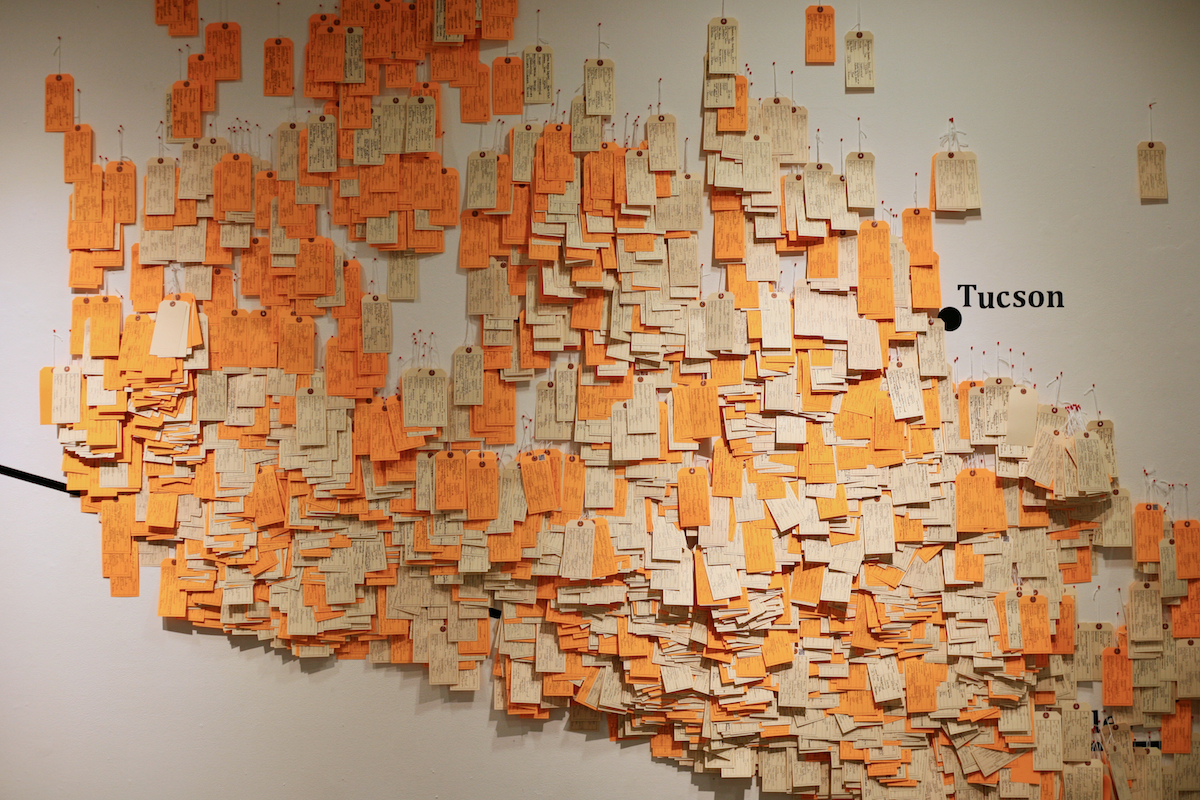Antiwar side needs better marketing
Say what you will about the war with Iraq, but it’s here, probably for some time. All the demonstrations, candlelight vigils and earnest war protests seemed to make no difference to the leaders deciding the course of events or to the people who still back them.
So peaceniks are left shaking their heads, wondering how to get their message across and counteract the mesmerizing images of bombing and blood now dominating the national screen.
I have a suggestion for this struggling community:
Accessorize.
Consumer products are the lingua franca of our realm. The antiwar folks can talk all they want about diplomacy and the horrors of battle and the need for international alliances, but talk cannot compete with the ever-popular G.I. Joe. (Never mind his control jeep and strike vehicles.)
Teach-ins cannot possibly be as sexy as wrapping one’s breasts in camouflage with the new military fatigue bra, available at many Marshall’s department stores for only $14.99!
And, evidently, buying a fuel-efficient, safety-conscious automobile is not considered as stylish as driving a Hummer, even though it looks like a squished house and costs about as much.
You’re nothing in America without a brand, an image, and I’m afraid the peace community does not always appear very, um, attractive.
Here’s how The Philadelphia Inquirer described the protesters who demonstrated on the first day of the war: “Some were scarcely adults: braided hair, baggy clothes, an assortment of body-piercing. Others were veterans of the peace movement since Vietnam: gray-haired and balding, faces worn, paunches sometimes straining their jeans.”
Can this hope to compete with a Christian Dior collection of camouflage underwear and evening gowns? I think not.
“Fashion has been in a military mood for at least five years,” says Chris Gilbert, creative director of the Fashion Service, a division of the Doneger Group, one of New York’s biggest fashion forecasters. “Uniform dressing was very real, very serviceable. It had an authenticity fashion was looking for.”
An authenticity! Not only that, but it seems that the military trend has now peaked (did I know this?) and is blending into a sporty, utilitarian but slightly softer look that invites fashionable folks to wear silk cargo pants with high, strappy sandals, which I doubt you’ll ever see at a peace vigil.
So military has gone mainstream, embedding itself, shall we say, in our culture. Worse, Gilbert tells me, last year’s flirtation with the hippie romantic look that bore a resemblance to the peace uniform of the 1960s has been entirely discredited.
Can’t someone make nonviolence look trendy?
An even greater challenge is competing with G.I. Joe. The 39-year-old “action figure” is more popular than ever, with sales increasing 46 percent last year, and that was before opening a bottle of Beaujolais became a political statement.
Somehow millions of boys and men – many consumers are adult collectors – have concluded that owning a 12-inch piece of plastic dressed in ersatz fatigues is an act of patriotism.
Now G.I. Joe is being joined on the battlefield with a member of Delta Force and all manner of high-tech gadgetry, as toy manufacturers work with the military to produce the latest in chemical protection suits and unmanned robotic vehicles.
To capture the hearts and minds of the nation’s young, the peace movement should pal up with a highly creative toy maker to market an “action figure” that uses words rather than quick-loading assault weapons.
After all, the Rev. Dr. Martin Luther King Jr. was a bona fide American hero. Mahatma Gandhi had a distinctive way of dressing. Kofi Annan has a cool name.
War will never be driven to the sidelines unless peace becomes sexy and desirable.
How about U.N. Barbie? Just think of the fashion possibilities.
Jane R. Eisner is a columnist for Philadelphia Inquirer.


